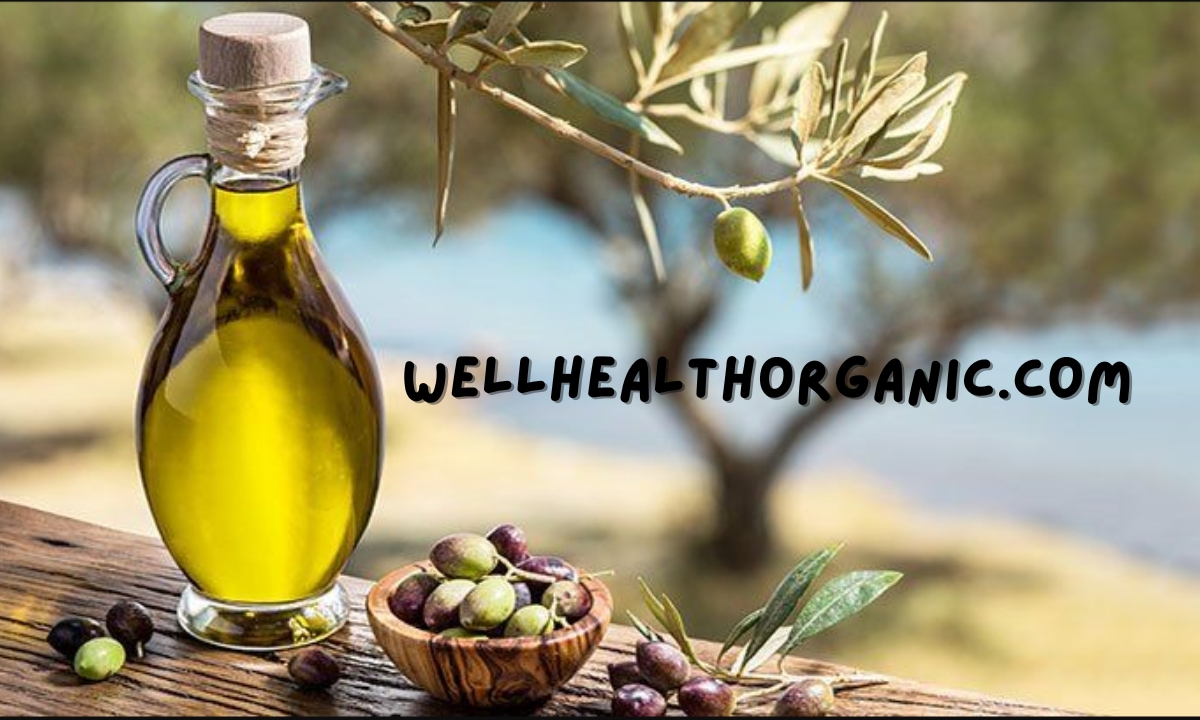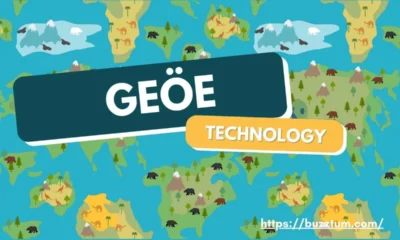Blog
WellHealthOrganic.Com: Integrating Wellness into Your Life

WellHealthOrganic.Com
In an era where consumers are becoming increasingly discerning about what they put into their bodies and the impacts on their surroundings, Well Health Organic has emerged as a pioneer in promoting a holistic approach to health. Tapping into a growing preference for clean and sustainably sourced living, Well Health Organic offers more than just products; it extends a lifestyle philosophy that intertwines personal well-being with environmental consciousness. This blog post is not only a testament to their mission but a treasure trove of health advice that’s both timeless and tailor-made for the modern wellness enthusiast.
The Benefits of Going Organic
Organic health products have gained popularity for good reasons. They offer a plethora of benefits, which go beyond individual health to contribute to a greater sustainable ecosystem. When it comes to nutritional value, organic foods often have higher levels of vitamins, minerals, and essential nutrients, thanks to the absence of synthetic pesticides and fertilizers. These contaminants are not only detrimental to one’s health but can leave residues in the soil, air, and water, affecting the entire food supply chain.
Furthermore, organic farming methods are designed to work with the environment, conserving water, reducing soil erosion, and promoting biodiversity. This is in stark contrast to the large-scale industrial agriculture that’s often synonymous with non-organic products, which can lead to soil depletion and harmful runoff. In essence, by choosing organic, consumers are not just benefitting themselves with high-quality, untainted produce, but are supporting a healthier planet.
Health Tips for All Ages
Wellness is not a one-size-fits-all endeavor. It evolves with us as we age and as our lifestyles change. Here’s a comprehensive look at tips that are universally beneficial for people of all ages.
A Balanced Diet Is Key
Balancing your meals to include a variety of food groups isn’t just a dietary saying, it’s a lifestyle choice that provides energy, manages weight, and supports bodily functions. Aim to have a mix of fruits, vegetables, whole grains, lean proteins, and healthy fats. Remember, diversity on your plate equates to a wider range of nutrients, so don’t shy away from exotic fruits, ancient grains, or plant-based proteins.
Exercise Regularly, Stay Fit
Staying active is a lifelong commitment to your health. It’s not about running marathons; it’s about finding routines that you can stick to. For some, it might be daily morning yoga; for others, it could be a brisk walk after dinner. The key is to move your body, strengthen your muscles, and maintain flexibility. Exercise is not only about physical health; it bolsters mental resilience and provides a positive outlook on life.
A Peaceful Mind through Stress Management
The world can be a stressful place, which is why developing methods to manage stress is crucial. This might include mindful practices like meditation, engaging in hobbies, or simply taking a break to breathe deeply. Chronic stress can lead to a variety of health issues, so making time for stress-relief activities is not indulgent but necessary for maintaining overall health.
The Science of Sound Sleep
Sleep is when our body repairs and rejuvenates. Yet, for many, it’s an area of neglect. Establishing a sleep routine, ensuring a comfortable sleep environment, and steering clear of sleep-disruptors like caffeine or electronic devices before bed, contribute to a restful night’s sleep. For those with ongoing sleep issues, seeking professional help can be pivotal in reclaiming quality rest.
Wellness Trends and Insights
The health landscape is dynamic, with new trends and insights emerging constantly. Keeping up with the latest can be both exciting and daunting. Here’s a glimpse of what’s buzzing in the world of wellness.
The Latest in Holistic Health
The current vogue for holistic health is more than a trend; it’s a shift towards more comprehensive, mind-body-spirit health practices. Holistic approaches view the individual as a whole, a sum of all parts that need nurturing. Wellness isn’t just about what you eat or how much you exercise; it’s also about your mental and emotional well-being. Practices to consider include acupuncture, Ayurveda, or even music therapy, as alternative means to complement traditional treatments.
Integrative Medicine – Where Allopathy Meets Alternatives
Integrative medicine combines conventional western medicine with alternative approaches, focusing on prevention and addressing the root cause of health issues. This approach encourages patients to be active in their healthcare, considering lifestyle habits alongside medical treatments. It’s a bridge between old and new, recognizing the value of time-honored practices while leveraging modern medical tools.
YOU MAY ALSO LIKE
Warm And Cozy Restaurants To Please Your Taste Buds 2024
Conclusion: Make Well Health a Priority
Your health and well-being are the most important investments you can make. By incorporating the advice from Well Health Organic into your life, you’re not just ensuring a healthier you; you’re contributing to a healthier world. Take these recommendations to heart, slowly integrating them into your daily routines, and you’ll find that the act of living well is a rewarding and enriching experience. Remember, health is a journey, not a destination, and every step you take to improve it is a step towards a more vibrant and fulfilling life.
To truly experience the benefits mentioned, take a step further and explore the products and services offered by Well Health Organic. Immersing yourself in an organic, sustainable lifestyle could very well be the next best decision toward a healthier you and a healthier planet.
Incorporate one small change at a time and watch the ripple effects on your overall well-being and the environment. Well Health Organic urges you to not just read these tips but to internalize and act upon them, and they might just become the foundation for your healthiest, most vibrant years to come. Remember, when we care for the planet and our bodies, we are engaging in the most fundamental act of self-love and self-preservation. Every little choice counts. Start now, start small, and watch the benefits compound over time.
Frequently Asked Questions (FAQs) About Organic Wellness and Health
1. What Is the Difference Between Organic and Non-Organic Products?
Organic products are cultivated without the use of synthetic pesticides, fertilizers, or genetically modified organisms (GMOs), ensuring the produce is cleaner and more natural. Non-organic products, conversely, may be grown with these methods, potentially leading to soil depletion and harmful environmental runoff.
2. How Can I Start Incorporating Exercise into My Daily Routine?
Starting with small, manageable activities that fit into your schedule is key. Consider incorporating short walks, yoga sessions at home, or even standing exercises while watching TV. The goal is consistency and finding an activity you enjoy to make regular exercise a part of your lifestyle.
3. What Are Some Effective Stress Management Techniques?
Effective stress management can include practices such as meditation, deep breathing exercises, spending time in nature, pursuing hobbies, and engaging in physical activity. The idea is to find activities that provide relaxation and joy, helping to mitigate the pressures of daily life.
4. Why Is Sleep Important, and How Can I Improve My Sleep Quality?
Sleep is crucial for physical repair, emotional regulation, and cognitive function. Improving sleep quality can involve establishing a regular sleep schedule, creating a comfortable and dark sleep environment, avoiding caffeine and electronics before bedtime, and practicing relaxation techniques to facilitate easier sleep.
5. What Are the Benefits of Integrative Medicine?
Integrative medicine offers a holistic approach, combining the best of conventional and alternative therapies to prevent and treat disease, focusing on the person as a whole. Benefits include personalized care plans, reduced reliance on pharmaceuticals, improved chronic disease management, and a focus on preventive care to maintain long-term health and wellness.
Blog
The Role of a Private Investigator in Modern Day Investigations

As the complexity of society’s challenges grows, the demand for specialized problem-solving skills surges. This is particularly true for those skilled in investigation. Far more than the cloak-and-dagger figures of fiction, today’s private investigators are highly-trained professionals offering their services in numerous situations, from unraveling corporate espionage to personal family matters. This deep dive explores the modern private investigator’s role, laying bare the reality behind the mystique and illuminating how critical these specialists have become in resolving investigative puzzles.
What Is a Private Investigator?
Private Investigators, such as the private investigator Rochester NY, are professionals trained and hired to collect information and verify facts where there is a need for independent investigative work. They do not replace the police but serve a distinct niche, assisting private individuals, law firms, corporations, and sometimes even government entities. Their work requires the ability to remain inconspicuous while observing situations closely, offering services that bridge the gap between law enforcement’s limitations and an individual’s capacity for seeking truth and security.
Services Offered by Private Investigators
From assisting individuals with personal concerns to conducting complex, multi-faceted investigations for businesses, the services provided by Private Investigators are as diverse as they are essential. Services include but are not limited to diligent surveillance operations—often for long hours under challenging conditions—to glean necessary information without being detected. Background checks are another standard service used to verify a person’s history for employment, relationships, or legal matters. In today’s connected world, locating missing persons or assets can take PIs across digital and physical plains as they piece together clues left behind. When fraud or theft puts personal or corporate assets at risk, PIs step in to follow the paper trails that may lead to justice. Personal security consultations by PIs can also enhance one’s privacy strategies in a world where information is easily accessible.
Essential Skills and Techniques in Private Investigations
The toolkit of a Private Investigator is filled with a range of skills that include, but are not limited to, physical surveillance, cyber-investigations, and legal knowledge. Observation and surveillance form the backbone of many PI operations, relying on discretion and vigilance to capture crucial incidents without raising suspicion. To keep pace with the digital age, PIs cultivate proficiency in cyber investigations—tracking digital footprints and securing evidence from online sources. Crucial to their professionalism is a deep understanding of legal guidelines and ethical considerations that bind their operations. This ensures the evidence collected is legitimate and admissible in any potential legal proceedings.
Clearing Misconceptions About Private Investigators
Despite the modern PI’s significant role, misconceptions about their practices persist. Far from the lone rogue operating above the law, Private Investigators must adhere to legal constraints and ethical guidelines. Most of their work is performed with the same straightforward diligence as any professional investigation, devoid of the drama and moral ambiguity often assigned to them by pop culture.
Finding a Dependable Private Investigator
Choosing a Private Investigator is a task laden with the need for trust and assurance. The process must start with confirming the legitimacy of their operation: verifying their credentials, assessing their professional experience, and ensuring they have the proper licenses to practice. A credible PI will have an established track record, exemplified by references and testimonials, which prospective clients should diligently review. An initial meeting will often reveal their commitment to an ethical code, as well as the level of professionalism with which they handle sensitive information and legal boundaries.
Navigating Legalities: The Boundaries of Private Investigation
Private Investigators operate under strict legal frameworks, respecting privacy laws and avoiding actions that would breach their client’s or subject’s legal rights. They’re barred from breaking, initiating unwarranted electronic surveillance, or engaging in harassment. Clients must understand that PIs cannot operate outside the confines of legality, upholding the investigation’s integrity while avoiding legal backlash. For more details on the legal clearances and requirements of PIs, one can consult information provided on the Bureau of Labor Statistics site.
Case Files: The Impact of Private Investigators
The accurate measure of a Private Investigator’s worth is seen in the outcomes they produce. The archives of PI work are filled with stories that have made tangible differences in people’s lives, such as reuniting families or aiding in the conviction of criminals by providing critical evidence. To further illustrate the significant role of private investigators in sensitive areas, Psychology Today discusses their involvement in stalking cases, where the need for experienced investigative work is paramount in ensuring the safety and peace of mind of victims. The careful, methodical work of Private Investigators often unfolds behind the scenes. Yet, the ripples of their diligence are felt far and wide, proving that in the world of investigations, the work of these dedicated professionals is both vital and valued.
Blog
The Benefits of a LEMIS Superfood Vegan-Friendly Facial

If you follow a vegan lifestyle, you may wonder how to get a nourishing facial without compromising your values. LEMIS superfood facials offer an animal-free alternative using ethically sourced botanicals. Discover the many benefits this vegan facial provides.
Cleanses Skin Gently
The LEMIS facial starts with a light cleansing using a plant-based oil like jojoba, sunflower or argan. This gently dissolves impurities without stripping the skin’s natural moisture like harsh soaps can. Your aesthetician may also steam your skin to open pores. The steam softens and loosens debris in pores to be washed away more easily.
Exfoliates with Fruit Enzymes
Next, fruit enzyme exfoliation lifts away dull surface cells using natural acids from papaya, pineapple and apple. This reveals brighter and smoother skin. It’s gentler than abrasive scrubs. Enzymes also provide antioxidant protection against free radicals caused by pollution.
Stimulates with Massage
Your aesthetician will massage the face, neck and shoulders to increase circulation and relax muscles. Soothing massage strokes boost collagen production, drain accumulated lymphatic fluid and relax facial tension for a sculpted, glowing look. Targeted facial massage techniques like effleurage, petrissage and tapotement also help product penetration by working active ingredients into the skin. This optimizes their nourishing effects.
Nourishes with Superfoods
LEMIS uses concentrated superfood serums packed with antioxidants, essential fatty acids, vitamins and minerals. Ingredients like algae, sea buckthorn, green tea, ginger and acai nourish skin with protective phytonutrients. Your skin will look plumper and more vitalized. These serums are made from cold-pressed extracts to retain the potency of the raw superfoods. Nutrients are delivered in their most active form for optimal absorption.
Hydrates Intensely
A hydrating mask infuses your skin with nourishing botanical oils and plant butters like avocado, jojoba, shea and cocoa. Dry, depleted skin drinks up this deep hydration. The oils help reinforce the skin’s moisture barrier too.Hyaluronic acid also attracts and binds moisture to the skin for next-level hydration. This visibly plumps up fine lines and wrinkles, resulting in a dewy, glowing complexion.
Soothes with Botanical Oils
To complete the facial, your aesthetician will massage the face with antioxidant facial oils like raspberry seed, carrot seed or pomegranate. This soothes any residual redness, while the botanical oils protect against environmental damage. Essential oils may also be incorporated for their anti-inflammatory, antiseptic and mentally uplifting aromatherapy benefits. This enhances the relaxation effects.
A superfood facial from LEMIS brings all the nourishing benefits of real, whole foods to your skin, using ethically sourced vegan ingredients. Your skin will look refreshed, smooth, hydrated and luminous without compromising your values. The relaxation effects are an added bonus! Give it a try. Schedule your appointment at Sage Spa.
Blog
Unlocking the Potential of Grop: A Comprehensive Guide

In the vast landscape of technology, one term that’s been making waves lately is “grop.” But what exactly is grop, and why should you care? In this comprehensive guide, we’ll delve into the world of grop, exploring its definition, applications, benefits, and potential pitfalls. Whether you’re a seasoned tech enthusiast or a curious novice, this article aims to provide you with a clear understanding of grop and its significance in today’s digital age.
What is Grop?
Grop, short for Graph Oriented Programming, is a programming paradigm that emphasizes the use of graph structures for representing and manipulating data and algorithms. At its core, grop revolves around the concept of graphs, which consist of nodes (entities) and edges (relationships between entities). By leveraging this graph-based approach, grop enables developers to model complex systems more intuitively and efficiently than traditional programming methods.
Understanding the Basics of Graphs
Before we delve deeper into grop, let’s take a moment to understand the basics of graphs:
- Nodes: Nodes, also known as vertices, represent entities in a graph. These entities can range from simple data points to complex objects or concepts.
- Edges: Edges, sometimes referred to as links or connections, define relationships between nodes. They indicate how nodes are connected or related to each other within the graph.
Applications of Grop
Grop has a wide range of applications across various domains, thanks to its versatility and scalability. Some common applications of grop include:
- Social Networks: Grop is widely used in social networking platforms to model relationships between users, interests, and activities. By representing social interactions as a graph, these platforms can offer personalized recommendations, friend suggestions, and targeted advertisements.
- Recommendation Systems: E-commerce websites and streaming platforms leverage grop to power recommendation systems. By analyzing the graph of user preferences and item relationships, these systems can suggest relevant products, movies, or music to users based on their interests and behavior.
- Network Analysis: In the field of network science, grop is used to analyze and visualize complex networks such as social networks, transportation networks, and biological networks. Researchers use graph algorithms to uncover patterns, identify key influencers, and study the structure and dynamics of these networks.
- Semantic Web: Grop plays a crucial role in the Semantic Web, where it is used to represent and query linked data. By organizing information into a graph-based format, the Semantic Web enables machines to understand and interpret the meaning of data on the web, leading to more intelligent search results and automated reasoning.
Benefits of Grop
The adoption of grop offers several benefits for developers, businesses, and end-users alike:
- Flexibility: Grop provides a flexible and expressive framework for modeling complex data structures and relationships. Its graph-based approach allows developers to represent diverse types of data and perform complex operations with ease.
- Scalability: Grop is highly scalable, making it suitable for handling large and dynamic datasets. As the volume of data grows, grop can efficiently scale to accommodate the increasing demands without compromising performance.
- Intuitiveness: The visual nature of graphs makes grop programming more intuitive and accessible, even for non-technical users. Graphical representations help stakeholders understand the relationships between entities and make informed decisions.
- Efficiency: By leveraging graph algorithms and optimizations, grop can achieve high levels of efficiency in data processing and analysis. This efficiency translates into faster query response times, reduced computational costs, and improved overall performance.
- Insights: Grop enables developers to uncover valuable insights and patterns hidden within complex datasets. By analyzing the graph structure, businesses can gain a deeper understanding of their customers, products, and markets, leading to data-driven decision-making and strategic planning.
Challenges and Considerations
While grop offers numerous advantages, it also comes with its own set of challenges and considerations:
- Complexity: Building and managing graph-based systems can be complex, especially when dealing with large-scale datasets and intricate relationships. Developers need to design robust data models, implement efficient algorithms, and optimize performance to ensure scalability and reliability.
- Data Quality: The quality of data plays a crucial role in the effectiveness of grop applications. Inaccurate or incomplete data can lead to misleading insights and compromised results. It’s essential to address data quality issues through data cleansing, validation, and verification processes.
- Privacy and Security: As with any data-driven technology, privacy and security concerns are paramount in grop applications. Protecting sensitive information, ensuring data confidentiality, and complying with regulations such as GDPR are critical considerations for developers and businesses.
- Tooling and Infrastructure: Building and deploying graph-based systems require specialized tools and infrastructure. Developers need access to robust graph databases, visualization tools, and development frameworks to effectively leverage grop in their projects.
- YOU MAY ALSO LIKE. The Importance of Professional Stump Grinding and Removal for Property Safety and Aesthetics
Conclusion
In conclusion, grop represents a powerful paradigm shift in the world of programming, offering a versatile and efficient approach to modeling and analyzing complex systems. From social networks to recommendation systems, grop has found widespread applications across various domains, empowering developers to unlock valuable insights and deliver innovative solutions. While challenges such as complexity and data quality remain, the benefits of grop far outweigh the drawbacks, making it a valuable tool in the modern technological landscape. As we continue to embrace the potential of grop, we can expect to see further advancements and innovations that will shape the future of graph-oriented programming.
FAQS.
1. What is the difference between grop and traditional programming?
Answer: Grop, or Graph Oriented Programming, differs from traditional programming paradigms in its emphasis on using graph structures to represent and manipulate data and algorithms. While traditional programming often relies on linear or hierarchical data structures, grop leverages the inherent flexibility and expressiveness of graphs to model complex relationships more intuitively.
2. How can I get started with grop programming?
Answer: To get started with grop programming, it’s essential to familiarize yourself with graph theory and basic graph algorithms. Additionally, you can explore graph databases and development frameworks that support graph-oriented programming paradigms. There are also plenty of online resources, tutorials, and courses available to help you learn grop programming from scratch.
3. What are some real-world applications of grop?
Answer: Grop has a wide range of real-world applications across various domains, including social networks, recommendation systems, network analysis, and the Semantic Web. For example, social networking platforms use grop to model user relationships and interactions, while recommendation systems leverage grop to provide personalized recommendations based on user preferences and item relationships.
4. What are the benefits of using grop in software development?
Answer: The adoption of grop offers several benefits for software development, including flexibility, scalability, intuitiveness, efficiency, and insights. Grop provides a flexible and expressive framework for modeling complex data structures and relationships, making it suitable for handling large and dynamic datasets with ease. Additionally, the visual nature of graphs makes grop programming more intuitive and accessible, even for non-technical users.
5. What are some challenges associated with implementing grop in projects?
Answer: While grop offers numerous advantages, it also comes with its own set of challenges and considerations. Some common challenges include complexity, data quality, privacy and security concerns, and the need for specialized tooling and infrastructure. Developers need to address these challenges effectively to ensure the success of grop projects and maximize their potential benefits.
-

 Technology5 months ago
Technology5 months agoEnhancing Cybersecurity: Understanding SIEM and Its Impact on Threat Management
-

 Travel7 months ago
Travel7 months agoThe Back Bay Station: Exploring the Heart of Boston
-

 News5 months ago
News5 months agoMcDonald’s New Adult Happy Meal: A Unique Twist for All Ages
-

 Travel5 months ago
Travel5 months agoRefining Your Travel Adventures within Budget: Intelligent Tactics for Astute Explorers
-

 Technology5 months ago
Technology5 months agoUnveiling Geöe: The Leading Edge in Sustainable Solutions for 2024 and Beyond
-

 Blog4 months ago
Blog4 months agoThe Spartan Integrity: An In-Depth Look at Spartan Capital Securities LLC broker jordan meadow and Its Path Forward
-

 Travel7 months ago
Travel7 months agoExecutive Large Office Moving Services Sherman Oaks
-

 Business3 months ago
Business3 months agoAdapting to Change: How Flexible Office Spaces Fuel Productivity and Growth






















